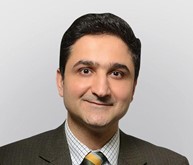Refresh and rejuvenate your skin
20 May 2019
What are the main features of skin ageing?
The process of ageing of skin involves three main areas; developing wrinkles, loss of volume and facial contours, and loss of elasticity and firmness of skin.
How can I reduce skin ageing?
Regularly moisturising the skin, appropriate sun protection, avoiding stress in daily life, having a balanced diet with enough fruits, vegetables, and proteins, and a high source of antioxidants, having a healthy lifestyle with sufficient sleep at night and away from smoking and drinking alcohol, and avoiding polluted environments are important factors to consider.
What are the main dynamic wrinkles on face?
Dynamic wrinkles are expression lines that may appear as folds and deepen with facial movements or expressions, eg Crow's feet around the eyes, worry lines on the forehead and frown lines between the eyebrows.
How does anti-wrinkle treatment injections help with facial wrinkles?
Anti-wrinkle treatment is mainly useful for dynamic lines. It paralyses the muscles that are responsible for frown lines, crow's feet and forehead lines. It is also used to change the shape of the eyebrows and to soften so-called smoker's lines around the lips, among other uses.
What is static wrinkling of the skin?
These wrinkles are visible at all times and do not change in appearance with facial movements. They include atrophic crinkling rhytids (little parallel lines that disappear when your skin is stretched taut), permanent elastic creases (crease lines on cheeks, upper lip, and base of neck that end up becoming permanent wrinkles as we age), and gravitational folds. (wrinkles that occur naturally with age as our skin loses structure and starts to fold and sag). This is mainly due to lack of collagen and elastin in the skin due to ageing. The process can progress faster due to the factors such as smoking and UV exposure.
Does anti-wrinkle treatment only help with dynamic wrinkles?
Eventually dynamic lines become static if they are not modified. Therefore treating them early will reduce the risk of developing permanent wrinkles later in life.
Interestingly, recent studies have shown evidence of new collagen formation induced by anti-wrinkle treatment injections.
What are the possible risks with anti-wrinkle treatment injections?
Botox is mostly a safe procedure when done by a practitioner with appropriate level of knowledge and skills. The most common side effects are mild bruising of the injected area and mostly bearable sharp sensation of the injection site during the treatment.
Am I a candidate for injectables (anti-wrinkle treatment)?
There is no age limit for treating with injectables. In fact it’s mainly individualized, depending on how often and how strongly you make facial expressions. In many cases the sooner you modify the dynamic wrinkles the more effectively reduce the risk of developing permanent wrinkles later in life.
In contrast, in older age it usually works better to have the combination of filler and anti-wrinkle treatment to address the two issues together for a better outcome, as they are more likely to co-exist.With more advance in injectables there is a higher chance of achieving an acceptable outcome without doing surgical facelift. For example the 8-Point facelift treatment is a technique for restoring volume in eight main areas on face, giving lift and support using small amounts of fillers.
What is skin rejuvenation and resurfacing?
It’s using treatment modalities to correct textural irregularities of the skin like wrinkles and acne scars, pigmentation changes like freckles, sunspots or visible blood vessels. Additionally it helps to improve the skin tone, and make it firmer and consequently younger.
What is laser resurfacing?
Laser resurfacing uses laser technology to reduce, and in some cases remove facial wrinkles, acne scars/facial scars and a variety of skin growths and blemishes, with minimal disruption and downtime for the patient. It includes using ablative laser such as carbon dioxide laser to resurface photo-damaged skin by removing the sun-damaged skin layer-by-layer and allowing the growth of new, smoother and more evenly toned, tightened skin.
Who is suitable for laser resurfacing?
People with mild, moderate or severe facial wrinkles and sun-damaged skin can all benefit from laser resurfacing. It is also used for actinic keratoses, actinic cheilitis, facial pigmentation (eg, solar lentigo), acne scars, rhinophyma etc.
What’s difference between ablative and non-ablative laser?
Unlike ablative laser, a non-ablative device just targets the deeper part of the skin called dermis. It’s tolerated better with fewer side effects. However the efficacy and treatment success is also less than what we achieve by using an ablative laser.
Is laser resurfacing an alternative to face lifting?
It provides a general ‘lift’ to the face, but the gold standard for face-lift is surgery. However the wrinkles on the lips and around the eyes, and uneven skin surface usually do not respond to face lifting but respond well to laser resurfacing. In fact plastic surgeons usually recommend laser resurfacing before the surgical facelift.
Key points to consider:
When deciding what treatment will be best for you bear in mind the following points:
- Prevention is just as important as treatment. Apply the advice mentioned earlier to your daily life to reduce your skin ageing
- Be realistic about the outcome you want. A practitioner could promise you things - but ensure you realise that no procedure can make you look 30 years younger
- Be well prepared before going to a consultation. Have all of your questions ready to ask. A detailed conversation is beneficial to both you and your consultant to make sure you are on the same page for the outcome of your treatment
- Find the right consultant with appropriate knowledge, skills, and experience
Dr Mohammad Ghazavi is a leading Consultant Dermatologist at Spire Bushey Hospital.


